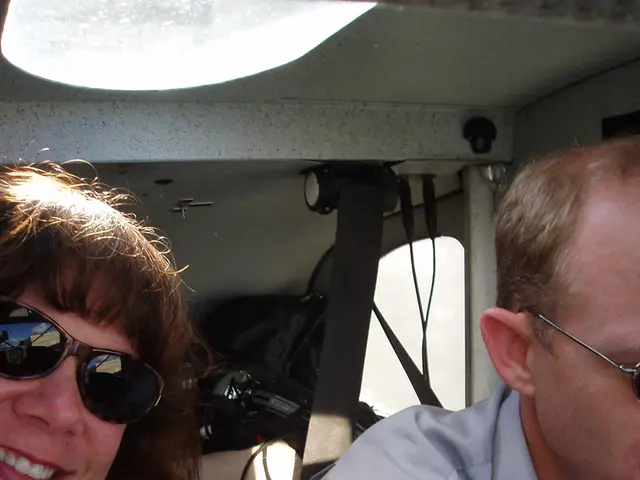Fears and Phobias in Early Life
In every child's life, there are common fears that are developmentally normal and often temporary. These fears, such as the fear of the dark, monsters, or starting school, can be addressed with parental empathy, communication, routine, and validation.
However, a phobia is a more intense, persistent, and specific fear that significantly disrupts a child's daily functioning. Examples of childhood phobias include emetophobia (fear of vomiting) and severe social phobia. Helping children overcome phobias often involves evidence-based, step-by-step programs that parents can support the child through, sometimes with professional guidance.
Common childhood fears are a part of growing up and are usually manageable within everyday parenting practices. Parents can help by understanding their child's fears, talking about them, creating a consistent bedtime routine, reducing exposure to frightening media, and encouraging expression of feelings without judgment.
In contrast, a phobia requires focused, often scientifically supported interventions for effective resolution. Parents play a supportive role in this more formalized treatment approach, reinforcing skills and helping manage setbacks as their child works through the fear gradually.
Here's a summary comparison of common childhood fears and phobias:
| Aspect | Common Childhood Fears | Childhood Phobias | |----------------------------|-------------------------------------------------------------|----------------------------------------------------------------| | Nature | Developmentally normal, often temporary | Persistent, intense, specific fear causing significant distress| | Examples | Fear of dark, monsters, starting school, conflict | Emetophobia (vomiting), severe social phobia | | Parental approach | Empathy, talking, routine, reassurance, limiting media exposure| Structured programs, professional guidance, cognitive-behavioral techniques| | Goal | Comfort, gradual overcoming through support and normalizing fears| Overcome paralyzing fear, restore healthy functioning |
For preschoolers, going to feared places with them, counting numbers loudly in the dark, and gradually introducing them to feared animals can help manage fears. During school years, children may develop fears of large insects or reptiles, thunderstorms or earthquakes, being alone at home, school-related issues like scoldings, failing tests, or rejection, scary TV shows or news incidents, injuries or illnesses, doctors, and injections. In these cases, talking about fears, providing realistic perspectives, reading books on precautionary measures, and supervised action can help.
Understanding childhood fears and phobias is a developing science. Factors related to biology can contribute to the development of phobias in children, with neurotransmitters such as serotonin and dopamine playing a role in forming emotions and feelings. It is estimated that nearly 9-10% of people worldwide suffer from a phobia of some sort.
If your child is struggling with a phobia, it's important to seek professional help. Psychiatrists diagnose phobias through mental health evaluations of the child. In extreme cases, they may recommend medication to help manage phobias. Treatment often involves counseling and cognitive behavioral therapy, with parental support being crucial.
There is an article available on School Phobia in Kids for further reading. Proper parenting plays a vital role in preventing the development of phobias. Staying vigilant, having open conversations with your child, and building strong bonds of trust can help.
References: [1] American Academy of Child and Adolescent Psychiatry. (2021). Separation Anxiety Disorder. Retrieved from https://www.aacap.org/AACAP/Families_and_Youth/Facts_for_Families/FFF-Guide/Separation-Anxiety-Disorder-Facts-for-Families.aspx [2] National Institute of Mental Health. (2021). Separation Anxiety Disorder in Children. Retrieved from https://www.nimh.nih.gov/health/topics/separation-anxiety-disorder/index.shtml [3] National Institute of Mental Health. (2021). Phobias. Retrieved from https://www.nimh.nih.gov/health/topics/phobias/index.shtml [4] National Institute of Mental Health. (2021). Specific Phobias. Retrieved from https://www.nimh.nih.gov/health/topics/specific-phobias/index.shtml [5] Mayo Clinic. (2021). Childhood fears and phobias. Retrieved from https://www.mayoclinic.org/healthy-lifestyle/childrens-health/in-depth/childhood-fears/art-20045875
- In the realm of health-and-wellness, it's crucial for parents to acknowledge that while common childhood fears are typical, childhood phobias, like emetophobia or severe social phobia, necessitate more focused interventions, often relying on evidence-based, scientifically supported treatment methods.
- In the pursuit of effective mental health practices, parents should be aware that although common childhood fears can be comforted and gradually overcome with empathy, routine, and validation, childhood phobias, such as fear of vomiting or severe social phobia, require a more structured approach involving step-by-step programs, professional guidance, and cognitive-behavioral techniques.




